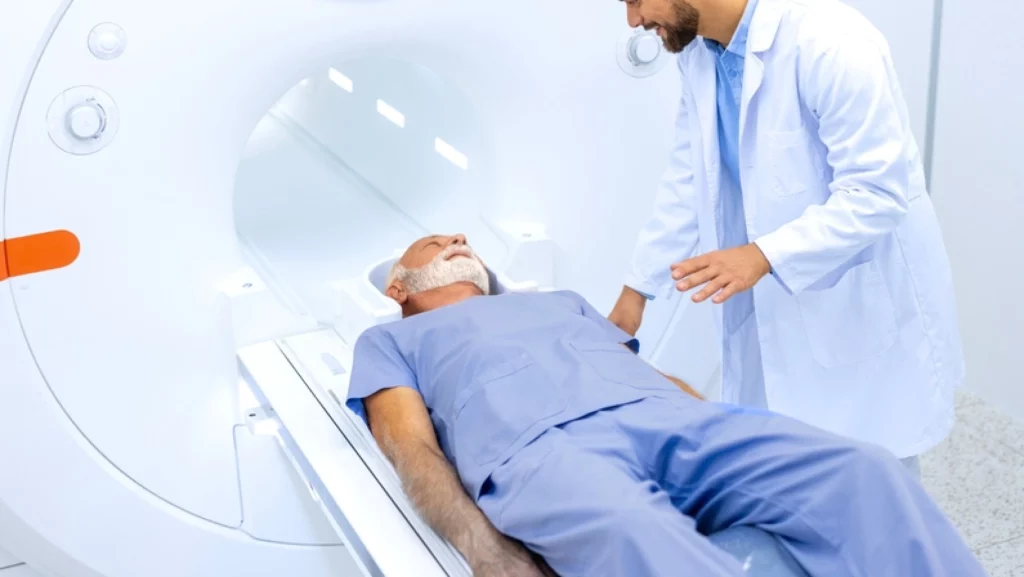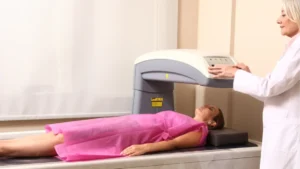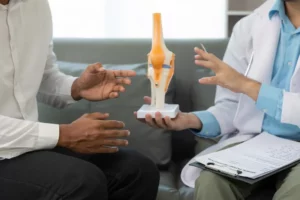As we age, our bones naturally lose density, increasing the risk of fractures and osteoporosis. A DEXA (Dual-Energy X-ray Absorptiometry) scan is a quick, painless test that measures bone mineral density, helping doctors assess bone health and take preventive action.
For seniors, early detection of bone loss can be life-changing, reducing the chances of debilitating fractures that impact mobility and overall quality of life.
Being informed about bone density can help you make informed decisions about diet, exercise, and treatment plans to support long-term wellness.
The Role of a DEXA Scan in Assessing Bone Density and Preventing Fractures
A DEXA scan is the gold standard for measuring bone mineral density. It helps to identify early signs and risk factors for osteoporosis or osteopenia before fractures occur. By assessing bone strength, this imaging test enables doctors to determine an individual’s risk for fractures and develop personalized prevention strategies. Maintaining strong bones is crucial for the elderly as it prevents mobility issues and serious injuries that can affect their independence.

Beyond diagnosing bone loss, a DEXA scan plays a vital role in monitoring the effectiveness of osteoporosis treatments. Regular scans allow doctors to track bone density changes over time and adjust medications or lifestyle recommendations accordingly.
The benefits of DEXA scan helps seniors maintain their quality of life and reduce the likelihood of fractures that can lead to long recovery periods or complications.
Why DEXA Scans Are Important for the Elderly
As people age, bone density naturally decreases, making them more vulnerable to fractures and osteoporosis-related complications. A DEXA scan provides valuable insights into bone health, allowing for early interventions that can slow bone loss and improve overall well-being. For elderly individuals, a DEXA scan is the best test for bone health to preserve mobility and prevent falls.
Early Detection of Osteoporosis or Osteopenia
Osteoporosis and osteopenia often develop silently, without noticeable symptoms until a fracture occurs. A DEXA scan helps detect bone density loss early, allowing for timely intervention through lifestyle changes or medications. Early diagnosis can prevent fractures that may lead to prolonged hospital stays or reduced mobility.
Risk Assessment for Fractures and Bone Loss
By measuring bone density, a DEXA scan helps doctors assess an individual’s risk for fractures, particularly in weight-bearing areas like the hips and spine. This risk assessment enables healthcare providers to recommend personalized treatments and lifestyle modifications. Regular scans ensure that bone loss is monitored and addressed before serious fractures occur.
Monitoring the Effectiveness of Osteoporosis Treatments

For seniors already undergoing treatment for osteoporosis, a DEXA scan is essential in tracking progress. It helps determine whether medications, supplements, or lifestyle adjustments are effectively maintaining or improving bone density. If bone loss persists, adjustments can be made to enhance treatment outcomes.
Identifying Lifestyle or Dietary Changes Needed to Maintain Bone Strength
A DEXA scan for elderly not only assesses bone density but also highlights the need for dietary or lifestyle changes. If bone loss is detected, doctors may recommend improving bone density naturally by increased calcium and vitamin D intake, weight-bearing exercises, or strength training. These adjustments can significantly enhance bone health and reduce fracture risks.
Identifying High-Risk Individuals
Some seniors are at a higher risk of osteoporosis due to genetics, underlying health conditions, or long-term medication use. One of the ways on how to prevent osteoporosis in elderly is through identifying risk factors early on. A DEXA scan helps identify these high-risk individuals early, allowing for targeted prevention strategies. Those with a history of fractures or conditions like rheumatoid arthritis can benefit from routine screenings.
Who Should Get a DEXA Scan?
A DEXA scan is a recommended osteoporosis screening for older adults. You may need one if you:
- Are over 65 or postmenopausal with risk factors for osteoporosis
- Have experienced a previous fracture from minor falls or impacts
- Have medical conditions or take medications that contribute to bone loss
- Have a family history of osteoporosis or hip fractures
What to Expect During a DEXA Scan

A DEXA scan is a simple, non-invasive procedure that takes only a few minutes. Here’s what to expect:
- Minimal Preparation: Unlike an MRI for tumor detection, a DEXA scan does not require fasting or contrast agents. You can eat and drink as usual before the test.
- Lying Down for the Scan: You’ll be asked to lie flat on a padded table while a scanning arm passes over your body. It’s quick and painless.
- Low Radiation Exposure: A DEXA scan uses very low levels of radiation, much lower than standard X-rays. It is considered safe for frequent monitoring.
- Immediate Results: Your doctor will review the results and compare them to previous scans to assess any changes in bone density.
Your Partner in Bone Health: One Step Diagnostic
Maintaining strong bones is essential for a healthy and active lifestyle, especially for seniors. A DEXA scan provides critical insights into senior health and bone strength, allowing for early intervention and fracture prevention. If you need an advanced imaging facility, One Step Diagnostic offers top-tier technology and expert care to support your bone health.
Take control of your bones and overall health! Searching for a “bone density scan near me” or “bone density test for seniors”?
Schedule your DEXA scan with One Step Diagnostic and gain expert insights into your well-being. Contact us today!




